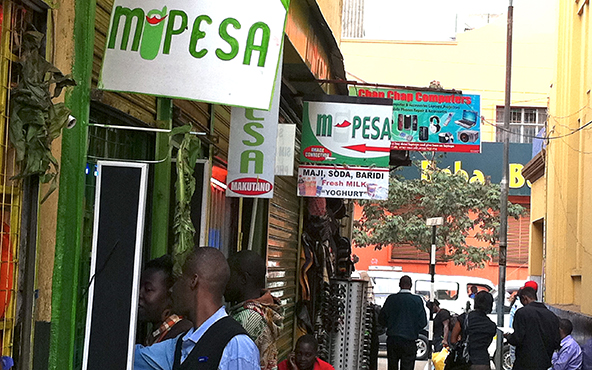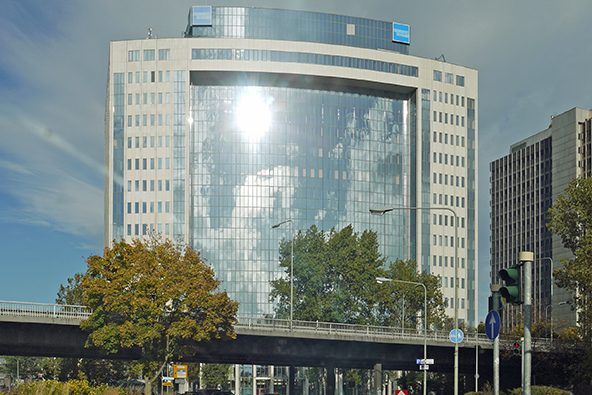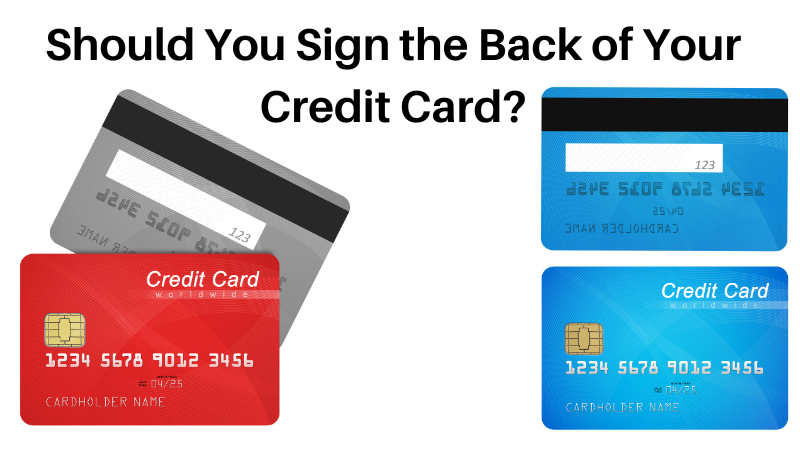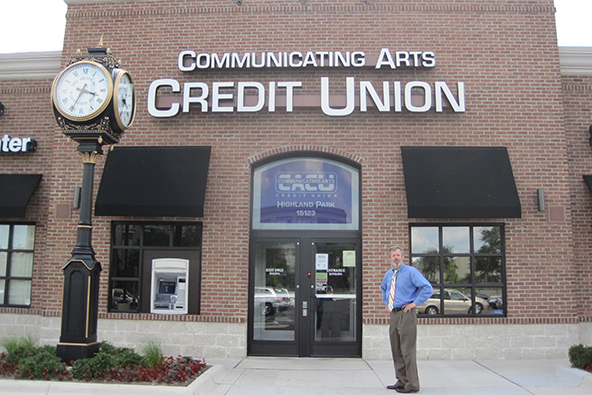M-Pesa at 5: A Huge Success, but Has Its Limitations

We are regularly criticized for not paying enough attention to M-Pesa — the hugely successful Kenyan mobile payments service — and with some justification. While we have closely monitored M-Pesa’s rise to prominence and have commented on it in several posts over the years, it is true that compared to, say, Square, our coverage of the Kenyan company has been distinctly spotty.
Well, something I read this morning prompted me to say a few words about why we are so focused on the Squares and PayPals of the (mobile payments) world and not on the M-Pesas. It was an excellent National Geographic article, honoring the Kenyan mobile processor’s fifth birthday. Its author — Olivia O’Sullivan — does a great job of explaining how M-Pesa works and why it has become so widely adopted in that country. However, O’Sullivan also states that “cashless transfers and mobile, flexible exchanges are not to be found in Geneva or London or New York” and that it is Kenya where a “revolution in mobile money transfer” is taking place. However widespread, that notion is very incorrect. Let me explain.
Why M-Pesa Is Successful in Kenya
Firstly, let’s see how M-Pesa works. Here is O’Sullivan’s overview:
m-Pesa relies on a network of small shop-front retailers, who register to be m-Pesa agents. Customers come to these retailers and pay them cash in exchange for loading virtual credit onto their phone, known as e-float. E-float can be swapped and transferred between mobile users with a simple text message and a system of codes. The recipient of e-float takes her mobile phone into her nearest retailer when she wants to cash in, and swaps her text message code back for physical money. There are already more m-Pesa agents in Kenya than there are bank branches.
In an underdeveloped and largely rural country like Kenya, the benefits of adopting such a system are clear, as O’Sullivan writes:
For people who live in isolated areas, the service means no longer having to carry lots of cash to markets or towns, risking losing huge amounts to banditry and theft. For people without permanent addresses or bank accounts, the service means they can pay what cash they have to m-Pesa in exchange for mobile credit, making payments and transfers and building up savings — becoming participants in an economy from which they had previously been locked out. For migrants, the service allows them to send money home to their families and villages safely and simply… For Kenyan businesses, the service means payments for stock or repairs can happen almost instantaneously, wiping out the need to rely on bank clearances and flawed infrastructure which had clogged the economy with inefficiencies and delays.
But here is a question for you: do you think that such a system could be implemented in a developed country?
Why There Is no M-Pesa in the U.S.
The answer to the above question is, of course, “no.” The reason we don’t have an M-Pesa-like platform in the U.S. is not that no one had thought of it, but that there is no need for it. There are many, many different ways for us to electronically pay our bills and to transfer money and there have been for many years. If a mobile payments system were to catch on with consumers in a developed country, it would have to either offer them a clear advantage over the existing platforms or to provide an entirely new service altogether.
That is precisely what the successful U.S.-based mobile payments providers have done. No company, in my view, exemplifies this approach better than Square. Jack Dorsey’s start-up was the first one to enable consumers to directly accept credit cards for payment. Before Square, only businesses could take cards. Moreover, Square was the first company to develop a technology that enabled card acceptance through a phone.
Another good example is the direct carrier billing technology, which has been around for far longer than either Square or M-Pesa. It allows users to purchase items and charge the transaction amounts to their cell phone bills. Some of the best-known direct billing providers are BOKU, Bango, BilltoMobile and Zong.
Yet another great example of breaking new ground in the payments industry can be found in any of the countless mobile wallet services that have been popping up all over the place over the past year or so. Digital wallets hold the promise of enabling us to store all of our payment accounts, such as credit, debit and prepaid cards, bank accounts, etc., into our phones.
All of the above m-payments platforms, and especially the mobile wallets, are more complex than M-Pesa. However, that is not done out of love for complexity, but because that is what the market needs. There simply is no demand for an M-Pesa-type of service in a developed country.
The Takeaway
The point is not that M-Pesa’s achievement is trivial and that we shouldn’t be bothering ourselves too much with it. On the contrary, the Kenyan m-payments processor has done an outstanding job of building a service that is tailored to perfectly match their users’ needs. Rather, the point is that the needs of consumers in developed countries are totally different, which is why start-ups and established companies in the U.S. and elsewhere have taken different routes to address them. And in some cases the results have been every bit as spectacular as M-Pesa’s accomplishment.
Image credit: Growthineastafrica.wordpress.com.



As someone that has written software for a number of credit card, MNO direct billing, merchant payment, etc. systems and M-PESA I can assure you that your claim that “All of the above m-payments platforms, and especially the mobile wallets, are more complex than M-Pesa” is not true. Running such a high volume system securely, reliably and economically on top of intrinsically unreliable but universally available network transports such as SMS and USSD while making it accessible to often poorly educated users is far from trivial. Also, the business model with multiple tiers of customers, merchants, agents, aggregators, banks, etc. and the management of the real cash/virtual cash interface is complex compared to most purely virtual systems.
I agree that the situation in developed countries is different. To a certain extent this is due to end user needs being different but don’t ignore the lock that the banks exert and the fragmented nature of the remaining efforts. If the banks and MNOs had co-operated we’d have had universal network wallets years ago but each side is worried they’ll lose out. Also, there’s the intellectual property issue. Developing countries provide opportunities for developing services without worrying that IP lawyers will sue them back into the ground as soon as they become successful.